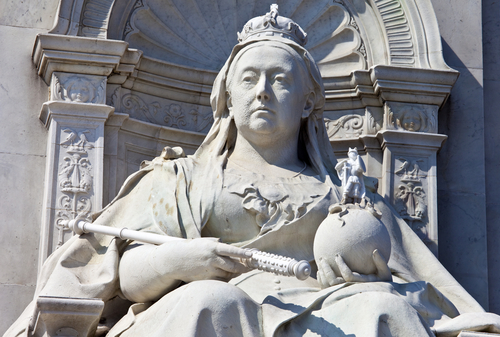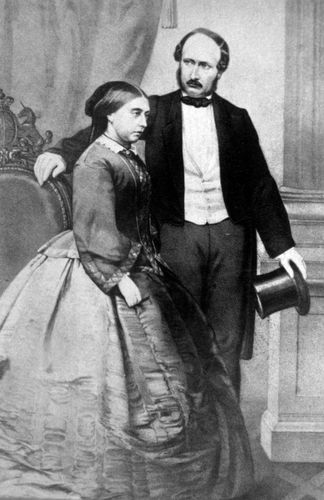Queen Victoria: The Ultimate Guide
Queen Victoria: A Reign of Transformation and Legacy
Queen Victoria, born Alexandrina Victoria on May 24, 1819, ascended to the British throne in 1837 at the young age of 18 and went on to become one of the most iconic and influential monarchs in history. Her reign, which spanned more than six decades until her death in 1901, is often referred to as the “Victorian Era.” This period witnessed significant political, social, and cultural changes that left an indelible mark on the United Kingdom and the world at large. In this comprehensive exploration of Queen Victoria’s life and legacy, we delve into the key aspects of her reign, her contributions, and her enduring influence.

Queen Victoria’s Early Life and Accession
Queen Victoria was born at Kensington Palace in London, the daughter of Prince Edward, Duke of Kent, and Princess Victoria of Saxe-Coburg-Saalfeld. Her birth marked the beginning of a new era, as she was the granddaughter of King George III and the niece of King William IV. However, her path to the throne was not straightforward, as she was fifth in line for succession at the time of her birth.
Victoria’s early years were marked by a strict and sheltered upbringing. Her father’s untimely death when she was just eight months old left her as the heir presumptive to the throne, but her childhood was overshadowed by power struggles within the royal family. Her mother and her trusted adviser, Sir John Conroy, exerted significant control over her life.
When King William IV passed away in 1837, 18-year-old Victoria finally ascended to the throne as Queen of the United Kingdom. Her reign marked the beginning of a new era in British history.
The Victorian Era: A Time of Transformation
Queen Victoria’s reign, which lasted from 1837 to 1901, was characterized by profound societal, political, and cultural changes that would shape the world for generations to come. Here are some key highlights of this transformative period:
1. Industrial Revolution:
The Victorian Era coincided with the height of the Industrial Revolution, which brought about significant advancements in technology, manufacturing, and transportation. Steam engines, railways, and factories reshaped the economy and urban landscapes, leading to the growth of cities and the emergence of a new industrial working class.
2. British Empire Expansion:
Under Queen Victoria’s rule, the British Empire expanded to become the largest empire in history. The acquisition of territories across Asia, Africa, and the Americas marked an era of unprecedented global influence for the British Crown. This expansion, however, was not without controversy and resistance from colonized regions.
3. Social Reforms:
Queen Victoria’s reign saw a wave of social reforms aimed at addressing various societal issues, including child labour, public health, and education. Key figures like Charles Dickens and Florence Nightingale played instrumental roles in advocating for change.
4. Cultural Flourishing:
The Victorian Era was a time of cultural flourishing in literature, art, and architecture. Renowned authors such as Charles Dickens, Charlotte Brontë, and George Eliot produced timeless literary works, while the Gothic Revival style in architecture and the Pre-Raphaelite Brotherhood in art left a lasting impact.
Queen Victoria’s Marriage and Family
One of the most enduring aspects of Queen Victoria’s life was her marriage to Prince Albert of Saxe-Coburg and Gotha, whom she wed in 1840. Their union was a true love match and produced nine children, who would go on to marry into various European royal families, earning Queen Victoria the nickname “Grandmother of Europe.” Prince Albert played a pivotal role in the royal family, serving as a trusted adviser to the queen and actively engaging in matters of state.
Tragically, Prince Albert’s untimely death in 1861 deeply affected Queen Victoria. She entered a period of mourning and wore black for the rest of her life, setting a trend for mourning customs in the Victorian era.
Queen Victoria’s Children
Queen Victoria had nine children:
- Victoria, German Empress
- Edward VII
- Alice, Grand Duchess of Hesse and by Rhine
- Alfred, Duke of Saxe-Coburg and Gotha
- Helena, Princess Christian of Schleswig-Holstein
- Princess Louise, Duchess of Argyll
- Prince Arthur, Duke of Connaught and Strathearn
- Prince Leopold, Duke of Albany
- Beatrice, Princess Henry of Battenberg
She was succeeded by Edward VII.
Queen Victoria’s Influence on Fashion
Queen Victoria’s mourning attire had a significant impact on Victorian fashion. Her preference for black clothing and somber styles influenced not only mourning fashion but also everyday dress. High-collared black dresses, veils, and jewelry made of jet became popular choices for women during this period. Despite her unintentional influence on fashion, Queen Victoria’s image remained that of a conservative and traditional monarch.
The Queen’s Golden Jubilee and Diamond Jubilee
Queen Victoria’s reign was marked by two historic jubilee celebrations that showcased her enduring popularity and the respect she commanded. Her Golden Jubilee in 1887 celebrated 50 years on the throne, while her Diamond Jubilee in 1897 marked 60 years of her reign. These jubilees were celebrated with grand parades, festivities, and public displays of affection for the queen. They also served to highlight the significant advancements and prosperity of the British Empire under her rule.
Queen Victoria’s Legacy
Queen Victoria’s legacy extends far beyond her time on the throne. Her reign left an indelible mark on the world in various ways:
1. Political Influence:
Queen Victoria’s constitutional role as a constitutional monarch was largely symbolic, but her influence behind the scenes was significant. She met regularly with her prime ministers and provided guidance on important matters of state.
2. Cultural Impact:
The Victorian Era produced some of the world’s most enduring literary and artistic works. The novels of Charles Dickens, the poetry of Alfred, Lord Tennyson, and the architectural masterpieces of the era continue to shape culture and aesthetics.
3. Global Expansion:
Under Queen Victoria’s rule, the British Empire expanded to its zenith, shaping the geopolitics of the 19th century and leaving a lasting legacy in many countries.
4. Mourning Customs:
Queen Victoria’s mourning customs influenced the way people grieved and dressed during periods of mourning. Her impact on funeral etiquette and fashion endured throughout the Victorian era.
Conclusion
Queen Victoria’s reign, spanning over six decades, was a time of remarkable transformation and influence. Her role as a constitutional monarch, her enduring love for Prince Albert, and her impact on fashion and mourning customs all contributed to her iconic status. The Victorian Era, marked by industrialization, social reform, and cultural achievements, continues to fascinate historians and enthusiasts alike. Queen Victoria’s legacy endures through the enduring cultural and historical impact of her era, making her one of the most iconic monarchs in history.

What you should do next...
- Browse our plots to claim your title of Lord or Lady of the Glen
- Discover the masjetic Kilnaish Estate
- View our fun gifts and accessories, inspired by the Scottish Highlands